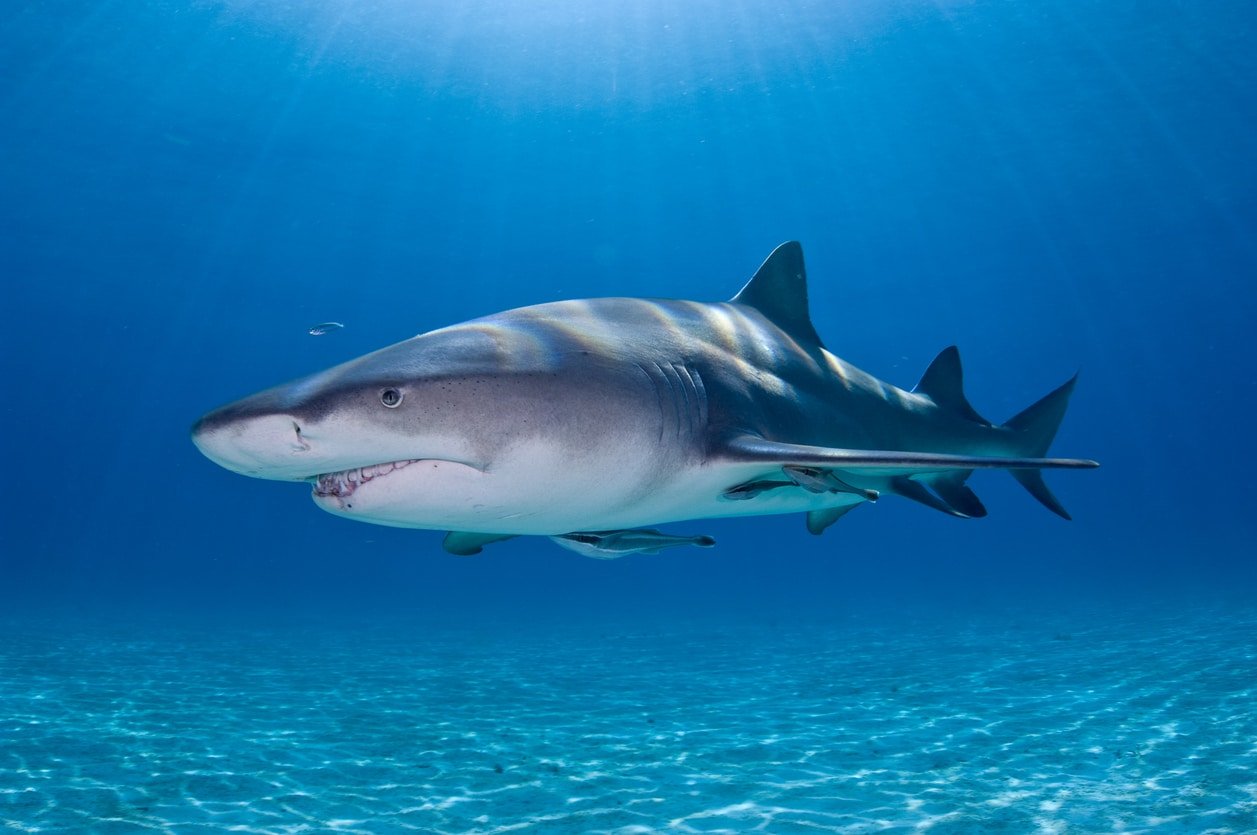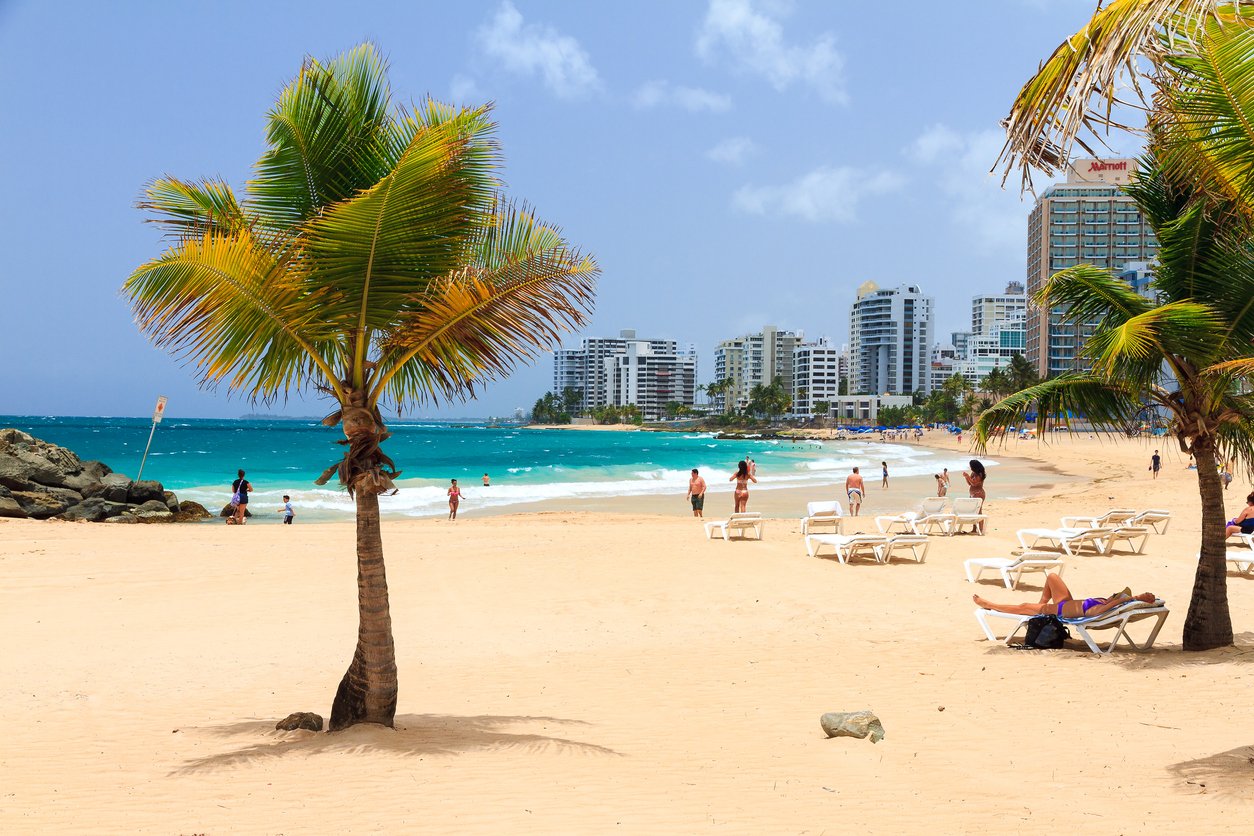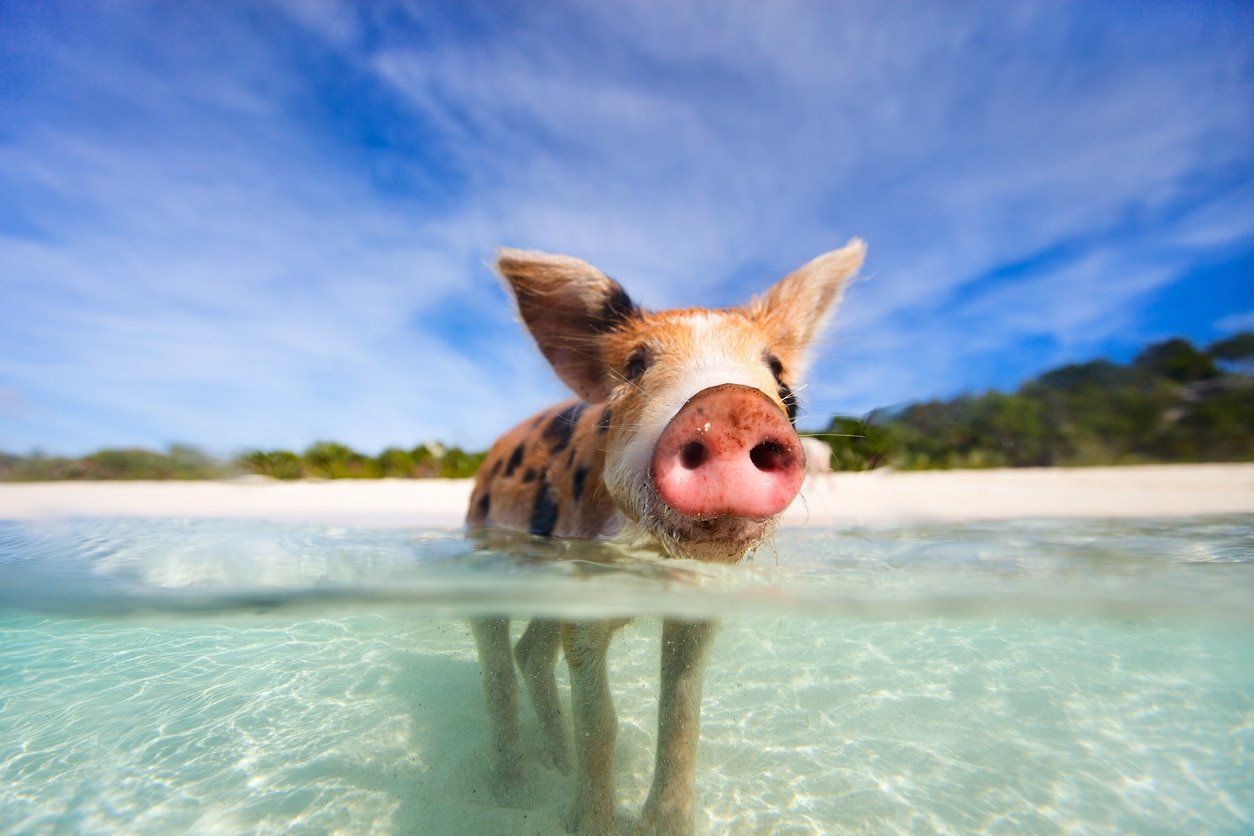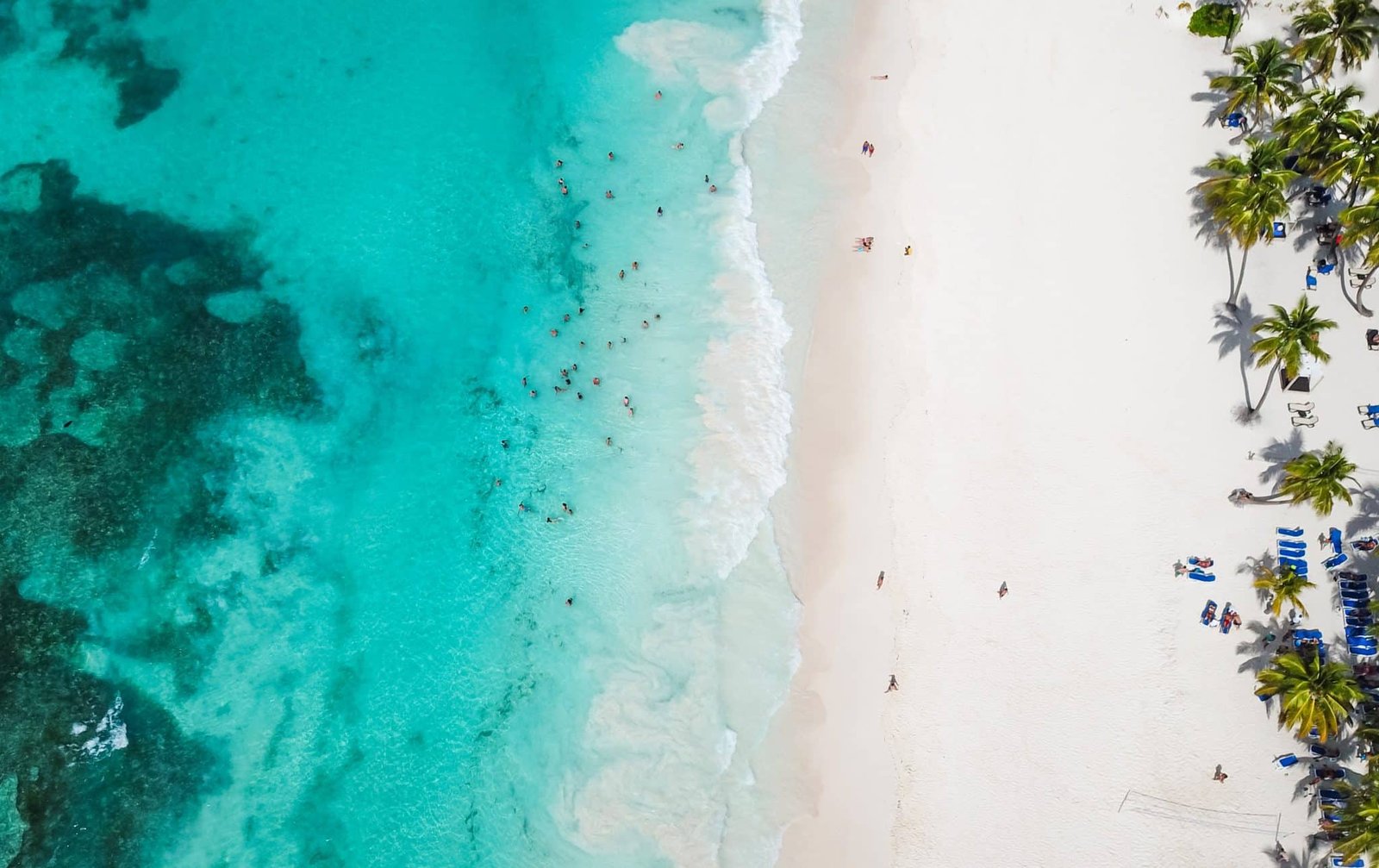Sharks in Puerto Rico: Attacks, Common & Dangerous Species, Staying Safe & More
|
Prefer listening over reading? We got you covered!
Getting your Trinity Audio player ready...
|
Puerto Rico is a fantastic destination when looking for year-round warm temperatures, or when you need to escape the cold winter months. The coldest it gets is 70 to 90 °F in January, which means you can swim, scuba dive, surf, and just enjoy the warm, beautiful beaches every month of the year here.
However, with tropical destinations that have warm water surrounding them year-round, that opens up the chance of sharks visiting as well. You will absolutely find sharks in the waters surrounding Puerto Rico, so understanding what sharks are common here, and which ones are dangerous is crucial to having a safe and enjoyable vacation.
Here we will show you the different types of sharks typically spotted in Puerto Rico, information around shark attacks and how common they are, the areas sharks frequent, what sharks are dangerous and even more.

Six Common Shark Species In Puerto Rico You Could Meet
Different species of shark enjoy different areas around Puerto Rico. Some will be found in the warm shallow waters close to beaches or river mouths, while others prefer reefs for the bountiful feast of fish available. Others you will only find in the deep sea where you’re unlikely to visit unless on a fishing trip. (Recommended: Snakes in Puerto Rico).
1. Caribbean Reef Shark
The Caribbean Reef Shark is the most common shark you will find when swimming or diving around the reefs of Puerto Rico. These sharks can grow to almost 10 feet long and weigh up to 150 lbs. Unfortunately, it’s difficult to distinguish these sharks as they are common-looking large grey sharks with no significant characteristic differences.
Caribbean Reef Sharks will most often ignore divers or swimmers; however, they can become aggressive during a feeding frenzy. As of 2021, there have been four confirmed reports of unprovoked attacks by this shark worldwide; thankfully none were fatal.
However a 2020 death of a tourist in St. Martin, close to Puerto Rico, is thought to have been a Caribbean Reef Shark.
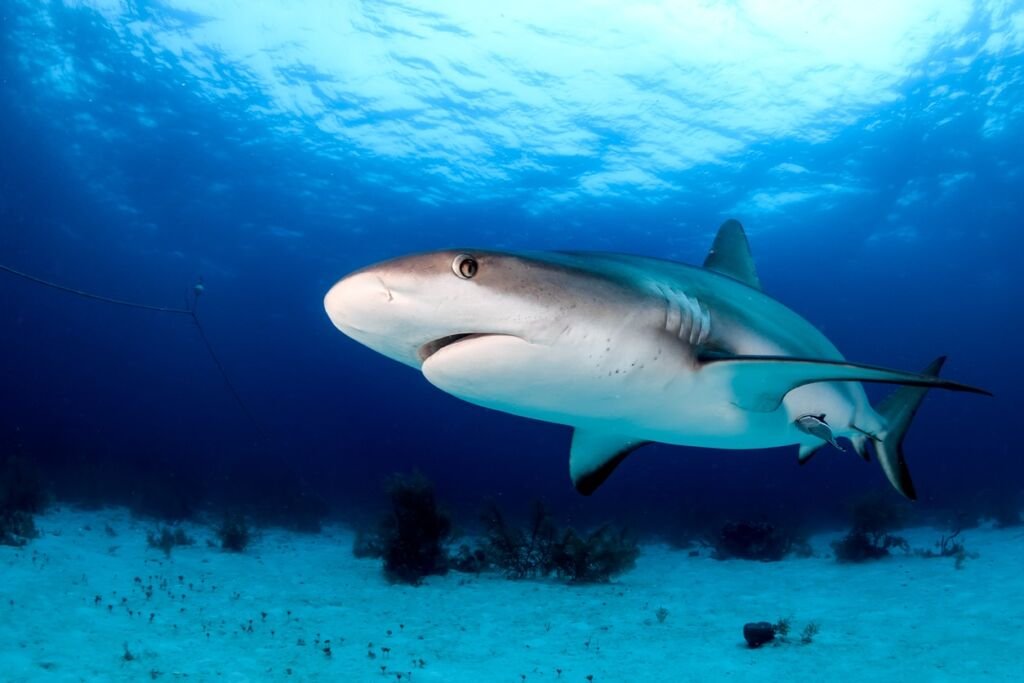
2. Blacktip Reef Shark
Blacktip Reef Sharks are another common sight around the reefs of Puerto Rico. These small sharks can grow on average to 5 feet long and weigh up to 30 lbs. The most distinguishing characteristic is their black fin tips.
Blacktip Reef Sharks are very shy and will often swim away if humans approach; however they do spend a lot of time in shallow waters, so interaction with these Puerto Rico sharks is very possible when you’re even just swimming near the beach.
As of 2021, there have been 14 unprovoked attacks on humans worldwide, none of which have been fatal. Most relate to the shark biting the feet and legs of swimmers.

3. Nurse Shark
Nurse Sharks are brownish in color, have a broad head, and their fins are rounded. They can grow to 10 feet long and weigh up to 300 lbs. You’ll often find Nurse Sharks in shallower water near reefs.
Nurse Sharks are not highly active and don’t have a significant interest in interacting with humans. However, in 2021 there were nine unprovoked attacks worldwide, none of which were fatal. This high number of attacks in one year is thought to be related to divers getting too close or prodding the slow-moving shark.
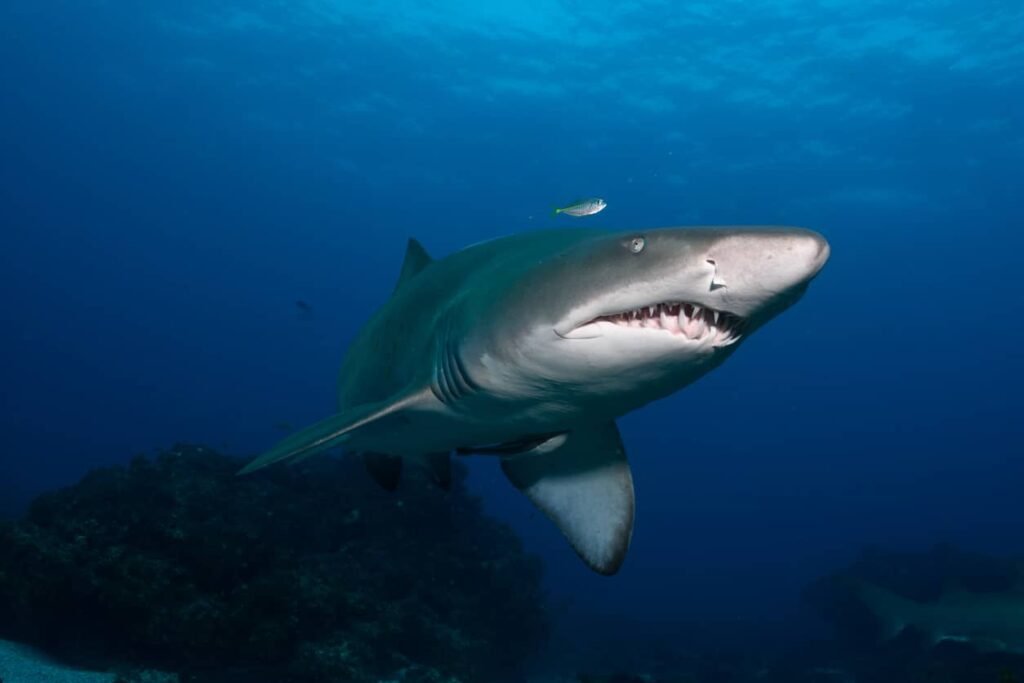
4. Silky Shark
Silky Sharks are prevalent in Puerto Rico; their name comes from how smooth their skin is. They grow to around 8 feet and can weigh close to 400 lbs. They’re most commonly found around islands over deeper reefs, so divers can sometimes encounter them.
Silky Sharks are very inquisitive and will approach divers. They become more aggressive closer to reefs and with food around. There have been reports of divers being repeatedly harassed by these sharks and made to leave reefs.
Despite the harassment these sharks sometimes show divers, there were only two unprovoked attacks in 2021, none of which were fatal.

5. Antilles Catshark
Antilles Catsharks are a tiny and cute species of shark found in shallow waters around Puerto Rico and many other parts of the Caribbean. You can spot a Catshark by its long wide eyes, similar to that of a cat. They grow to around 1.5 feet long and can weigh just 3 lbs!
These catsharks pose no danger to humans, and there have been no reports of unprovoked attacks.
6. Whale Shark
Whale Sharks may be dangerous simply due to how large they are, but that’s it! Although challenging to get accurate lengths and weights, it’s estimated these sharks can grow up to 72 feet long.
These incredible creatures are considered gentle giants by marine enthusiasts and are of very little threat to humans. In fact, whale sharks are incredibly social and many divers report hitching a ride on the fins of whale sharks, and the most common injury to humans from whale sharks is getting hit by their large fins.
There have been no reports of attacks by Whale Sharks on people, and you can even go whale shark watching during certain months through a tour operator.
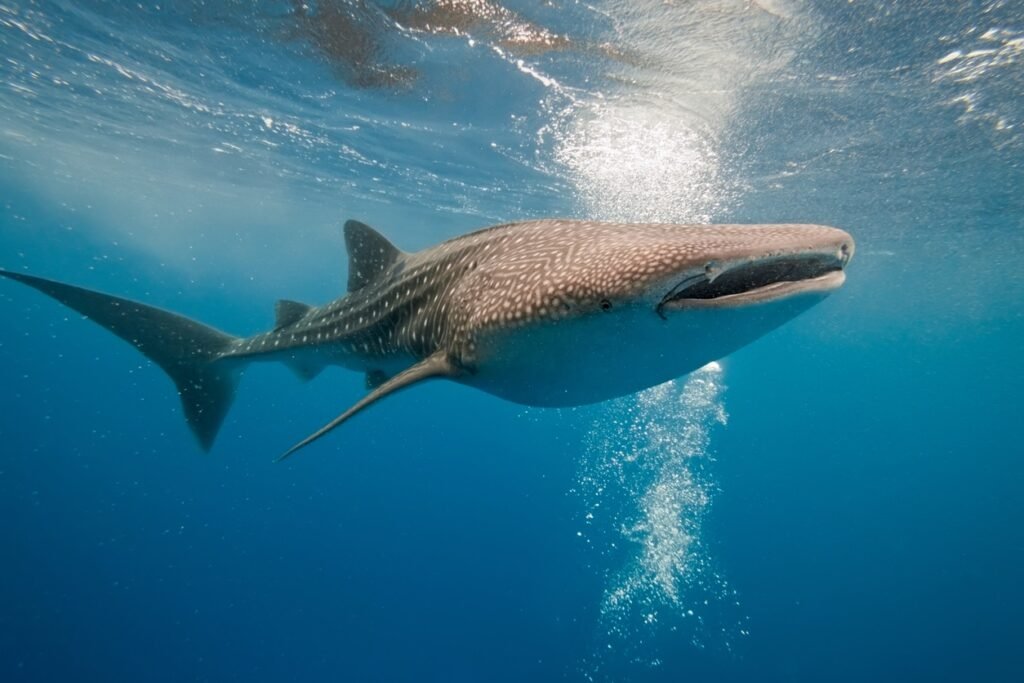
The Three Dangerous Sharks In Puerto Rico You Should Know
There are dangerous sharks in Puerto Rico, and there have even been some sightings of Great White Sharks in Puerto Rico – however those are extremely rare here. Yet, there are many other dangerous species in the waters of Puerto Rico that you should be aware of.
1. Tiger Shark
Tiger Sharks are found mostly in deeper water near reefs, however they are known to visit river mouths or venture into shallow reef waters. This shark can grow to almost 14 feet long and weigh up to 1,400 lbs, so it is quite a monster in size. The defining characteristic for spotting one is the dark tiger stripes running down its body.
Tiger Sharks are known for eating almost anything, including other sharks. This is often thought to be a common reason for attacking humans, as they are checking to see what you are to see if they want to eat you.
Second only to the Great White Shark in terms of attacks on humans, Tiger Sharks are extremely dangerous, and in 2021 alone, accounted for at least 131 attacks worldwide, with 34 being fatal.
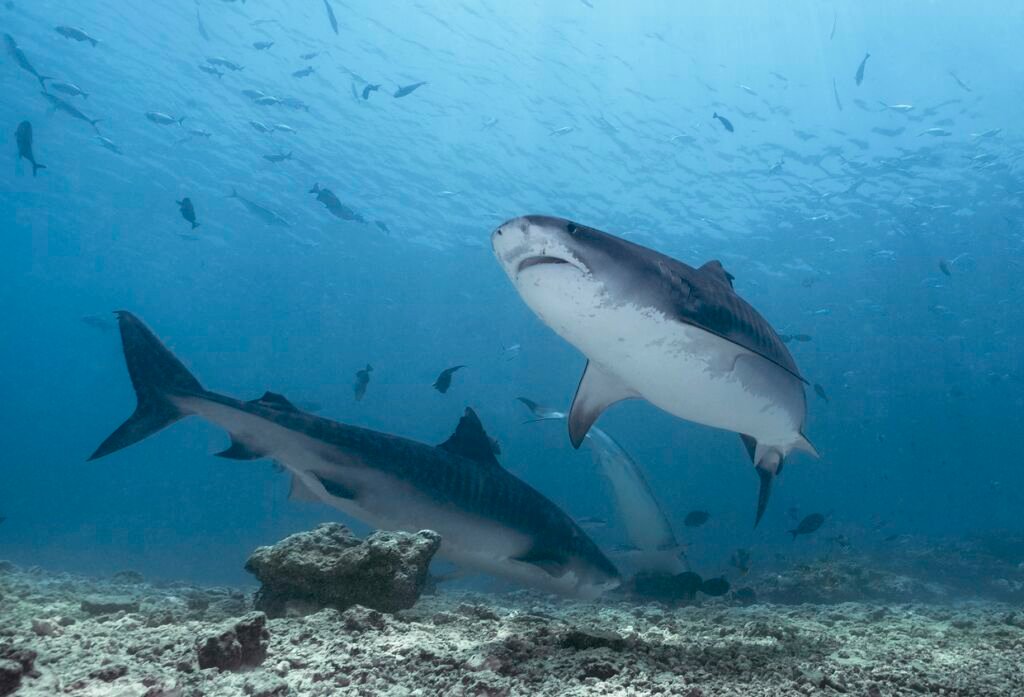
2. Oceanic Whitetip Shark
The Oceanic Whitetip Shark is a large, stocky shark with white tips on its fins; they can grow to 13 feet long and up to 370 lbs. It does prefer deeper waters but spends time around islands such as Puerto Rico.
Unfortunately Oceanic Whitetips are a popular fishing species and subsequently are endangered. They’re considered extremely dangerous, however there is little interaction with humans outside of fishing, boats, and downed airplanes.
In 2021 there were 15 unprovoked attacks, with three being fatal. So even with limited interaction with humans, this shark still manages to make it into the higher end of human attacks.
3. Bull Shark
Bull Sharks are common-looking with grey on top and white on their bellies. They grow on average to be 8 feet long and around 300 lbs. These sharks prefer warm coastal waters and can even swim up freshwater rivers and live in lakes, where you don’t really expect to find sharks!
In 2021 Bull Sharks made at least 117 unprovoked attacks, with 25 being fatal. This is attributed to their habitat, which puts them in constant contact with humans. They are highly aggressive in nature if you show the slightest sign of provocation; and they will not swim away from you.
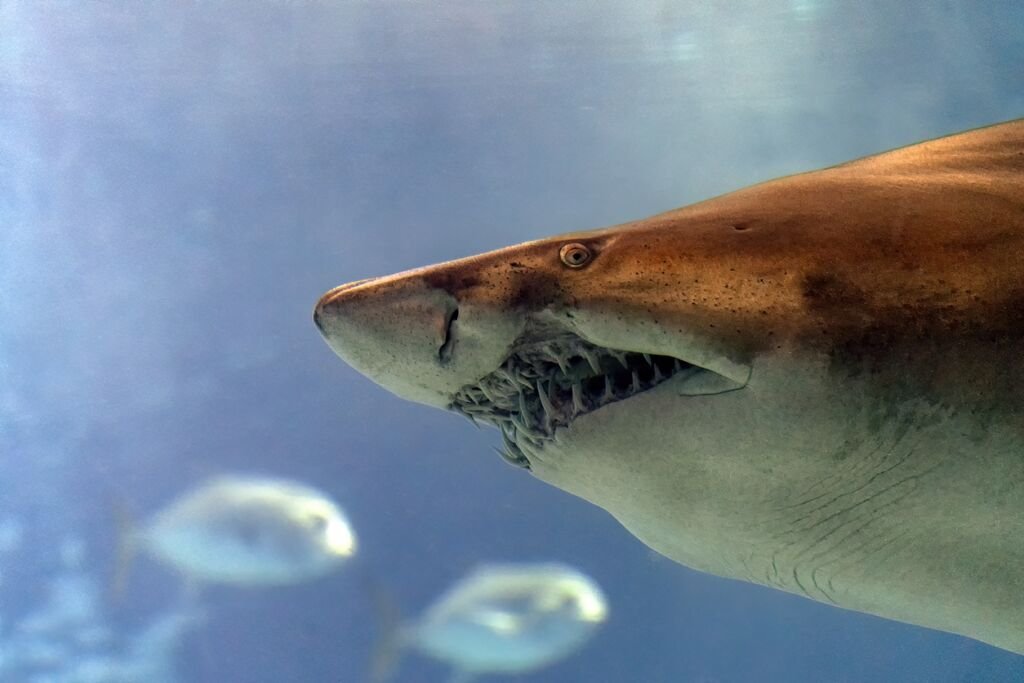
How Common Are Shark Attacks in Puerto Rico?
Shark attacks are relatively rare in Puerto Rico, though they do happen. While sharks don’t consider humans a food source, there can be situations where they mistake you for something else, you get caught up in the crossfire of a feeding frenzy, or the shark is protecting itself.
Between 1900 and 2021, there have been a total of 16 shark attacks reported in Puerto Rico, 10 were unprovoked, and 6 were either provoked or in relation to a specific incident like an airplane crash. Of the total 16 shark attacks, only 4 were fatal.
After 2000 there have only been 3 shark attacks, 1 on a swimmer, 1 on a surfer, and another related to an airplane crash. In most shark attacks related to airplanes, the “victim” may already be dead from impact.
The good news is that it’s highly unlikely a shark will attack you, and if you are attacked, then in most situations, the shark will cause a non-fatal laceration but let you go.
Shark attacks are often broken into unprovoked and provoked because sharks aren’t looking to cause humans any problems. However, if you try to capture or interfere with them, they will fight back and attempt to attack you. In some situations, sharks are big enough to sink your boat, which puts you in grave danger once you’re in the water. This generally only happens when shark fishing.
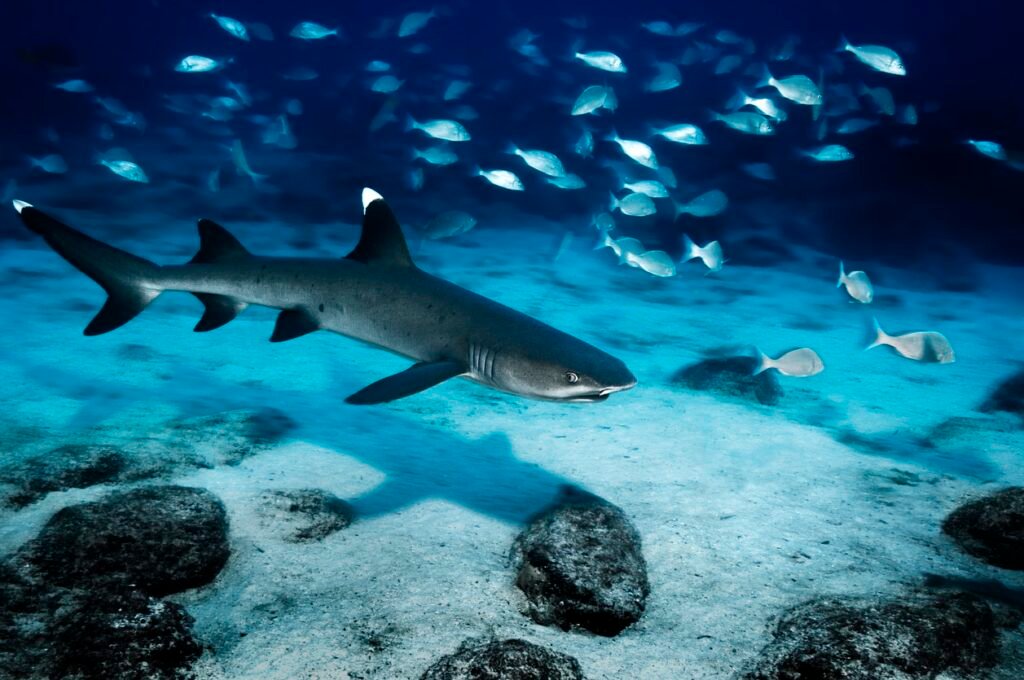
What Should You Do if You Come Across a Shark?
Stay calm and don’t flail your arms or legs around, as the thrashing can attract a shark to investigate to see if you’re food. By investigation, sharks will nibble on you to see what you are.
Keep eye contact with the shark if possible and slowly swim away from it. Try to stay vertical rather than horizontal when moving away from the shark.
Our Final Thoughts
Whether you’re swimming, diving, or surfing in Puerto Rico, you will most likely be safe from any kind of shark attack. Worldwide, shark attacks are extremely rare and even more so in Puerto Rico.
Be careful with how you interact with any sharks you encounter; it’s best to leave them alone, and if they become too aggressive towards you, then leave immediately.







